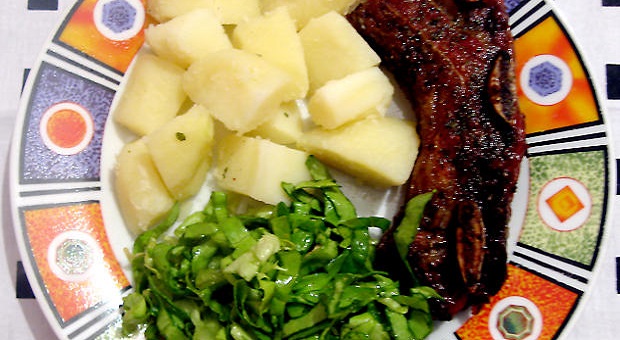You don’t want to be caught without all your favorite midnight snacks. Inevitably, there will be less marauding gang encounters than there will be growling stomach standoff’s in a real survival scenario.
The real key to survival food is finding a happy mix between taste and longevity, right?
You got a basic introduction to survival gourmet in the previous article. What you probably want more than anything right now is to get into the meat of the content now, with some impactful additions to your cupboards.
This series of articles essentially doesn’t have a shelf life either; there are constantly, more items to recommend, test and try. Who doesn’t want to elevate their survival food preps to the upper echelon?
There WILL be future articles to give you more ideas and to act as a resource for you to find some unique and flavorful additions to your food storage setup. As an aside: freeze dried foods and home canned products can also serve as a great basis (though not renewable like aquaponics, livestock or gardening). All reliable food sources should be considered as part of your preparations.
A note: You need extensive amounts of water for a variety of reasons. You should be working on your water storage and water purification techniques to ensure you have adequate water supplies during a time of need. It’s a well-known fact that the human body can go 3 minutes without oxygen, 3 hours without shelter, 3 days without water and 3 weeks without food before it is overcome. Water is THAT important. Not only do you need hydration, but you need to be able to reconstitute food with water to ensure you have the best flavors and textures with your survival food prep.
Let’s jump right in so you can grab a few more ideas. Keep in mind that learning techniques like canning and dehydration can also expand your capabilities when things get tough. You’ll be able to use a wider variety of foods that will help keep it interesting for your family if you can incorporate these techniques into your planning.
Meat and Seafood
Bacon was mentioned earlier as well as seafood and condiments (though we barely touched on some of the options within those categories). Now let’s talk a bit more about long shelf life items in the same vein.
It’s not quite bacon, but it is salty, satisfying and full of meaty flavor: canned hams are excellent items to add to your storage. DAK brand makes a very good quality canned ham with a shelf life of more than 5 years (most of these canned hams have a “stated” shelf life of greater than 3 years).
The packaging and processing of these hams allow them to develop caramelization on the meat just like a regular ham. This means that it can be crisped up nicely to give a good textural variation for your food.
Bar Harbor brand White herring in a can is great as a full meal replacement or as a snack. Similarly, canned mussels (Roland brand cherrywood smoked mussels are pretty good) are basically a delicacy. After all, isn’t that what you’re looking for?
A treat; something you actually crave. Another very high quality fish in a can is whole tuna from Italy, Spain or other Mediterranean countries, for instance Ortiz brand Bonito Del Norte. At about $4 a serving, it isn’t cheap. Despite the price, it’s probably the best quality canned tuna widely available. Super high-quality tuna fits well into the theme of gourmet survival food.
The Best Survival Food Condiments
With condiments, you’re looking for flavor bursts. Some of the best are fish products like Fish Sauce and anchovies. Anchovies are a base ingredient for many dressings and flavorful sauces like Caesar dressing. Fish sauce goes well with anything and has a huge shelf life due to the components in it. Two good brands to look at are Red Boat (Vietnamese Extra Virgin Fish Sauce) and Ortiz (Glass jar Anchovy Fillets in oil).
Other shelf stable items that make sense are soy sauce (about 2-4 years for most mainstream brands); habanero hot sauce (about 2-3 years for most brands) and Tabasco (5+ years in some cases). Hot mustard powder and wasabi powder are excellent items for a wide range of foods.
Dried herbs and spices, like granulated garlic, dehydrated onion and dried jalapeño are superstars as well. All of these items are typical, off the shelf items and all have excellent shelf life if stored properly (7+ years).
Missing Your Milk and Cheese?
Dairy products are also a big morale booster, and something of a delicacy during situations where you’ll be using long-term food storage, but finding shelf stable items is not easy.
Powdered milk doesn’t taste very good, hard cheeses are hard to preserve without advanced knowledge of waxing, brining and cheese-making techniques and butter goes rancid quickly.
Evaporated milk makes an excellent milk substitute when reconstituted with water and has a 2-3 year shelf life. It also has the added bonus of being about a dollar for 16 ounces of reconstituted milk or so. Carnation makes a very good version, albeit a bit more expensive than most generic producers.
Red Feather brand (a New Zealand based company) makes an excellent creamery butter in a can, with a shelf life exceeding 5 years. The butter itself is actually better quality than what you get at the grocery store as a fresh product. There are higher end producers with niche canned butters, but the price is usually above $7 a can, which is equivalent to about 2 sticks of butter in size.
This is real butter, best used for adding to bread or for actually eating for butter flavor, rather than cooking. If you want butter for cooking, you’d be better served in economy and usefulness by using Ghee (clarified butter). Ghee is used in the Middle East for cooking, with most versions having a shelf life of more than 4 years, even after opening. Coconut oil can be used as butter like spread too, when salted, and can be used for frying and cooking. Coconut oil has a 5+ year shelf life if stored in a cool dry place.
Man Cannot Live on Bread Alone, or Can He?
Bread in a can is the easy answer to hot bread (try the B&M brand), but having yeast and eggs and oil (all which can be shelf stable if done properly) can also yield bread. For a simple bread, you can use an Indian bread recipe that only requires 3c of flour; 1/2 tsp of salt; 1 tblsp baking powder and 1c of warm water.
The dry ingredients get mixed together, the water is added to make slightly sticky dough; separated into small pieces and stretched by hand then fried in coconut oil or ghee. This bread is excellent and tastes like a donut dough with more density. A similar bread item can be made with Flour water, shortening (vegetable shortening has a 3 year + shelf life if stored properly) and salt, which is essentially a white flour tortilla.
These types of bread can be incredibly comforting and satisfying, and can offer a new outlook on some of the items in your storage. They are easy to make, taste great and add substantial calories and carbohydrates to your food supply.
Eggs, Buttermilk and Cheese
We touched on eggs earlier; it’s important to mention that eggs which have never been refrigerated can last an incredibly long time. This can be extended impressively if coated in mineral oil and stored in a cool dry place (many preppers have used eggs that are 15 months old that were stored this way).
The emphasis is on the fact that they start fresh and remain unrefrigerated. You cannot use grocery store eggs in such a way. Additionally, egg substitutes like the “OvaEasy” brand powdered whole eggs are seriously good, especially if you are using them for baking or for scrambling.
We mentioned milk earlier too, but powdered buttermilk is an excellent baking companion as well. The Bob’s Red Mill brand makes a very good powder; while not great for drinking, it’s good for biscuits and fried chicken.
Hard cheeses, especially those with low moisture content can be waxed and stored easily for 15 years in some cases. The only danger of a waxed cheese is a sharper flavor profile. A good alternative is Bega brand processed canned cheese. This cheese is made for those in areas of the world where refrigeration is not particularly available.
It tastes like a mix between cheddar and American cheese, with an almost spreadable texture. It has much less of a processed flavor than typical processed cheeses.
The Best Small Batch Meats
The last item to touch on is the cured meats and preserved meats, including duck confit (pronounced ‘cone-fee’). Such food prep just proves life isn’t so bad when you’re prepared for the worst and using the best. Hearty, powerfully flavored cured meats and intensely flavored high end meats like duck are sure to be missed by the least prepared survivors.
You won’t have any such inconveniences. Most of the cured meats available are stored at room temperature. Generally speaking, if the packaging is substantial and airtight and the item has not been stored in refrigeration, then it will have a substantial shelf life relative to other meats.
Most experts would not recommend going too far past a 1 year shelf life on most meats, unless canned or frozen (in which case, 16-24 months is generally the longest you’ll want to use them, with some canned meats lasting 3 years if commercially produced).
Chorizo like Palacios brand Spicy Spanish Style chorizo, and other cured chorizo will last a year or so before it starts degrading in flavor. (DO NOT use Mexican style chorizo for unrefrigerated storage as it is uncooked and uncured).
Duck confit is cooked duck preserved in duck fat. Available in a vacuum packed version or a canned version, either one is excellent quality and lasts a long time (3 years). The duck fat can also be used to cook with, or strained and reused. Canned beef and chicken can be used for rice and chili, pasta and soups. These are just a few items that might help you elevate your stored food to the next level.
The goal with these articles on gourmet food preparations is to give you ideas and to help you understand the reasoning behind shelf life determinations and a long-term supply. Got any new ideas now that you’ve seen these?
P.S. In the next articles we’ll be upping the game even further, giving you a ton of great options to build up a truly gourmet food storage plan. In the end, you cannot be truly prepared unless you have a renewable food source (so look into Aquaponics, gardening and livestock).
You cannot stay in high spirits if you’re eating bland food. You’ll want to tag along with us as we move along on the journey to build a culinary experience worth prepping for!
This article has been written by Ben Worthen for Survivopedia.





































































You can easily store bricks of Mozzarella for 3-6 months in your freezer.
The instructions for the Apple brie Cheese Omelette recipe
are pretty straightforward, even a mere male such as I am able to follow it, and even make it a tasty dish.
* Place other slice of bread on top of the cheese, margarine side up.
Except there will be no freezer after the fall.
No Mozzarella either 🙁